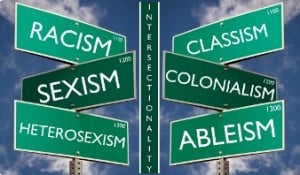While her father issued an executive order which resulted in the detainment of children and the separation of loved ones from one another, Ivanka Trump was pushing for a policy which, on its face, appeared much less detrimental to American families.
“This policy is to encourage all companies and all Americans to get the benefit of it should they be mothers because it’s so critical and so important,” she said on Good Morning America.
Ivanka Trump’s plan, which includes a tax credit for childcare, may seem like a move in the right direction – until you examine it with any amount of rigor.
Unfortunately, you’ll find one glaring problem.
Ivanka Trump’s policy proposal would provide six weeks of paid maternity leave – meaning, there are no protections for dads, non-binary caregivers, or caregivers who didn’t give birth.
Although it’s supposed to make the workplace more welcoming for parents, it could have the opposite effect. And it could potentially undermine years of progress made by the labor community and deepen the gender wage gap.
While Ivanka’s policy proposal may – without further inspection or introspection – seem like the right thing to do, it’s actually emblematic of the exact reason why moms get forced out of the workplace and dads don’t.
When we think about “caretakers,” or those who need paid leave, we tend to imagine a person who fits the conventional image – a cisgender woman, probably younger, with a partner, probably a man, who works full-time.
Unfortunately, in maintaining that stereotype and perpetually linking motherhood to caretaking – and caretaking to old ideas of womanhood – we’re perpetuating cycles of inequity for just about everyone.
Let’s break this down.
1. Caregivers Take Many Forms
Offering paid leave only to “new mothers” is also necessarily exclusive because women who have just given birth are certainly not the only moms who need time off.
Though motherhood has traditionally been associated with womanhood and birth – and thus, contributed significantly to the gender wage gap – not all moms give birth, and not all moms necessarily identify as women. Some parenting groups have multiple moms while others have none.
Additionally, not all primary caretakers or parents necessarily identify as “mothers” or “moms,” but they certainly experience many if not all of these behaviors and barriers in the workplace.
For example, trans and non-binary folks, same-gender couples, second-generation or other familial caregivers, and those who have adopted children might not refer to themselves as “mothers” per se. So that’s important to outline upfront.
And of course, there are plenty of single dads or dads who are primary caregivers – and maternity leave plans which erase them do exactly nothing to correct the centuries of expectations that caring for children is solely the purview of women.
For example, a Major League Baseball player was dragged in 2014 for taking paternity leave during the season.
So, paternity leave – or, more broadly, family leave or caregiver leave – is a far more inclusive policy notion than paid time off for new mothers.
However, there are still attitudes in the workplace about who should take time off, who’s expected to be a caregiver, and who gets a break when they need some personal time.
Even if family or paternity leave is available, it’s typically much less time than moms are given off, and men often don’t take it anyway because they’re afraid of missing out on job opportunities.
And there’s the rub.
2. Viewing Caregiving as ‘Women’s Work’ Retains Imbalance
There are numerous studies which have found that women take more sick time than men, though it’s not because they’re sick more.
It’s because they tend to use their time off to care for children. In fact, a mother is ten times more likely to use all of her own sick time to stay home with a child or take a child to a doctor’s appointment.
In the US, there’s no federal law requiring family leave for parents or caregivers, which makes the nation an aberration in the industrialized world. There’s also no requirement that a worker be allowed to take paid sick leave.
This forces many parents – especially, statistically speaking, mothers – to take a pay cut, or even lose their job to care for a child.
And when women still earn less than men, overall, they’re even more likely to be the ones to take that hit.
Catherine Rampell wrote the following in a piece about incentives for paternity leave in the New York Times:
“Without careful design, expanding work-life accommodations can unintentionally reinforce archaic gender roles and lower the glass ceiling, Temple of Doom style. That’s because women are much more likely to take advantage of these policies, and employers know it.
“If you want to create policies that promote women’s labor-force participation without curbing their career achievements, you also have to address why family-friendly policies aren’t being used by men.”
Consider this: When your young woman coworker says she needs to pick up her kids, is the boss fairly understanding? What if your male coworker, or your non-binary coworker, or your trans coworker, or your older coworker says they need to leave early to pick up someone else?
There’s little room for accommodation in the modern American workplace for parents – but where there is accommodation, it’s disproportionately given to new moms, as opposed to other kinds of caregivers.
This results in women being edged out of work opportunities, while other caregivers may not take leave when they need it. This also forces caregivers to experience undue burden to meet expectations that wouldn’t otherwise be heaped upon them.
Which is to say: We know that women currently take on the bulk of caregiving labor and they pay for it in the workplace. So paid maternity sounds great, right?
Except for one critical factor: In allowing caregiving to remain “women’s work” by only incentivizing paid maternity leave, workplaces (and the federal government) may further stigmatize it, ensuring that other caregivers are edged out.
This also serves to keep caregiving duties from being spread around. When the only leave a family can receive is for a new mother, it necessarily creates an imbalance between parents or caregivers and everyone else.
Instead of allowing numerous parents or caregivers to take a few hours off every few weeks to split the duties, one person is disproportionately expected to take all of the time off. And often, it’s the mom.
As long as we continue to expect only mothers as we’ve traditionally defined them to take time off with kids, we will continue to perpetuate the stereotypes and expectations which push women out of the workplace even when they have paid leave.
In short, when parenting and caregiving duties are assigned to mothers and expected only of mothers, mothers will continue to be marginalized in the workplace.
3. Discrimination of Moms Is Real – And Difficult to Combat
Because of the way parenting roles are traditionally assigned to women, women often experience discrimination in the workplace due to the expectation that they will be the primary caregiver.
Writing for the Atlantic, Darlena Cunha noted just some of the ways that women with children are perceived:
“According to sociologist Shelley Correll, mothers are more heavily scrutinized than both women without children and men with or without children. Her research shows that motherhood results in biased evaluations of both competence and commitment to a job, that women with children can do the exact same quality work as those without children, and it will be perceived as less well done…
“…Studies from 2004 and 2010 have shown that mothers start at a lower pay than their coworkers, make less money over time, and they receive raises and promotions less often than their colleagues – that is, when they’re kept around.”
Of course, there’s little proof that moms are actually less reliable or lower-quality workers. In fact, there’s evidence that they may be better employees because they’re trying to keep up.
And, yet, the perception that they’re somehow a detriment to business persists.
Even the President himself has shown the way that so-called job-creators feel about mothers in the workplace when he referred to pregnancy as “inconvenient.”
It’s difficult for moms who are the victims of discrimination to get justice, though, which makes the cycle hard to break without radically changing our collective understanding of who takes care of people and how they’re compensated.
Though “free-market” types don’t believe in offering paid leave and, instead, work inside the existing system, it’s pretty clear that this isn’t a functional way to achieve workplace equity. Again, Cunha writes:
“A big challenge for women who want to take their claims to court is that discrimination can be very hard to prove, Colorado attorney Brian Stutheit says. In many states, videotaping inappropriate workplace behavior for evidence goes against privacy laws. And unless there’s a paper trail clearly indicating harassment or discrimination, the evidence is considered circumstantial. In Stutheit’s experience, eyewitnesses are hard to come by because they also work for the company and don’t want to jeopardize their own employment.”
Getting tougher on bad apples might work in individual cases, but if we want to seriously address the way moms are pushed out of the workplace, it’ll be essential to make it clear that parenting is not a weakness, not a liability, and not an indicator that someone is a bad employer.
And one very important way to do that is to change what we collectively imagine when we think about caregiving.
4. It’s Not Just Bosses Who Edge Moms Out
As a person who’s childfree by choice, I’ll admit that I haven’t always been as empathetic as I should have been to the plight of parents.
When I’d get the work of my coworker – a new mom – piled onto my desk, I’d sometimes feel resentful.
This shared feeling was brought to a head when an article in the New York Post espoused one woman’s quest for “all the perks of maternity leave” without having children. She called it me-ternity leave and, naturally, the Internet immediately took sides.
This woman was selfish, many people decided, while others thought she was revolutionary. Who wouldn’t want a relaxing few weeks to themselves, just as new moms get?
The answer: No one. But that’s called a vacation, not paid family leave.
Any new mom will tell you, it’s no cakewalk when you’re caring for a newborn. Nor is it easy when you’re taking time off to care for disabled children. And it’s not exactly a spa day to take a leave of absence to tend to an aging parent.
All of these are reasons people may need to take paid family leave – and none of them are the same thing as several weeks of vacation.
The fact that so many Americans were immediately stirred to the point of rage over the suggestion that everyone should be able to take time off regardless of whether or not they had children isn’t a reflection on paid family leave policies.
It’s a reflection of the fact that many of us don’t get vacation time, and, when we do, we aren’t encouraged to take it.
That’s a shame, because vacation – that’s independent from family leave – is actually really smart business. Numerous studies have shown that time off is good for “productivity” and that workers who are encouraged to take their time off are more effective and happy.
Put more briefly, simply offering maternity leave to new moms won’t solve the problem of women being backed out of the office – but offering more expansive leave policies, including vacation and encouraging paternity and caregiving leave – would.
We wouldn’t all be climbing over the top of each other for time off or opportunities or positions if we all got on board with vacations and paid family leave for all caregivers and a more cooperative work environment.
***
As a person who’s invested in the study of economics and who tries to hold empathy and inclusion as core principles, it’s clear to me now that the more I can lift up caregivers of all stripes, the better off we’ll all be.
The truth is that dismantling workplace discrimination for moms and all caregivers is a heavy lift.
For all of American history – and further back than that – the expectation in the western world has been that men go to work and women stay home with the children.
As we begin to see parenthood differently – that is, outside of the gender binary and beyond traditional gender roles – we also need to see parenthood’s relationship to corporate life differently.
And a huge first step in doing that is to eliminate exclusionary maternity leave and replace it with demands for paid leave which benefits all workers in all kinds of families.
[do_widget id=’text-101′]
Hanna Brooks Olsen is a Contributing Writer for Everyday Feminism, a small human, and a Millennial. Her interests are politics, podcasts, Pac-12 football, feminism, and Oxford commas. She is curious to a fault. Follow her on Twitter and Medium @mshannabrooks. Read her articles here.
Search our 3000+ articles!
Read our articles about:
Our online racial justice training
Used by hundreds of universities, non-profits, and businesses.
Click to learn more





















